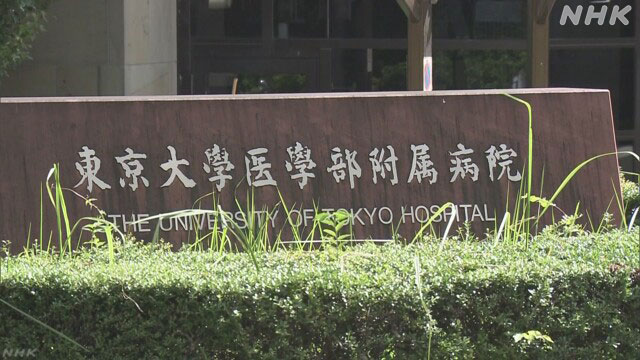As the number of critically ill patients with the new coronavirus increases, the University of Tokyo Hospital simulated the operation of the in-hospital ICU = intensive care unit. It was found that it is necessary to reduce the acceptance of patients who require advanced treatment other than the new corona, such as organ transplantation, by about 30%.
The University of Tokyo Hospital has three ICUs, one for emergency use and two for general advanced medical care, and the new Corona's critically ill patients have 10 beds of emergency ICU. I did.
At the hospital, the number of critically ill patients is increasing nationwide in the fourth wave of the epidemic, so we simulated the medical care provision system in the hospital.
As a result, the emergency ICU will be full, and if two other ICUs each accept two critically ill patients with the new corona, the number of medical staff required will increase, so a total of 12 general patients. I found that I needed to reduce it.
In a month, the number of patients accepted for myocardial infarction, subarachnoid hemorrhage, organ transplantation, etc. will be reduced from 129 to 84 by about 35%.
Associate Professor Kento Doi of the Emergency Center of the University of Tokyo Hospital, ER, said, "I think that the role of the University of Tokyo Hospital is that critically ill patients are required to take on the role of corona and non-corona. I want to undertake it, but I want the number of infected people to be reduced somehow. "
Increasing number of severely ill people after long holidays
The University of Tokyo Hospital has accepted more than 100 critically ill patients with the new coronavirus in the emergency ICU for about a year from March last year to last month.
The University of Tokyo Hospital's emergency ICU operates 10 beds in a private room, and even if it accepts critically ill patients with the new corona, it can take measures against infection, so it can also accept ordinary emergency patients in parallel.
There are two other ICUs in the hospital that support advanced treatments such as heart disease treatment and organ transplantation, with 16 and 18 beds, respectively. Since many medical staff who are good at treatment such as vessels and ECMO = heart-lung machine are required, there is no choice but to reduce the acceptance of normal patients.
At Todai Hospital, the number of seriously ill patients with the new corona began to increase around the time of the long holidays, and recently about 7 to 8 people have been hospitalized, and as of last week, 2 of them were receiving ECMO treatment. , It means that there are 4 patients who are being treated for ECMO due to a different disease from the new corona.
Cooperation between 3 university hospitals and surrounding medical institutions
In order to accept more critically ill patients with the new coronavirus, it is necessary to transfer patients who are recovering to another hospital to get sick for the severely ill, but it is nationwide that no transfer destination can be found. It is an issue.
Therefore, the three university hospitals, the University of Tokyo Hospital, the Tokyo Medical and Dental University Hospital, and the Nippon Medical School Hospital, jointly search for a transfer destination in collaboration with 23 surrounding medical institutions. We are working on an initiative called the Backward Support Medical Institution Collaboration Consortium.
The local medical institution has registered online how many patients can be accepted in the system, and if there are patients who have recovered from a serious condition at three university hospitals, the secretariat is the University of Tokyo. Find a medical institution where hospital nurses can transfer.
Until now, doctors in the ward were looking for a transfer destination directly, but by setting up a secretariat and searching for a transfer destination professionally, it will help reduce the burden on the staff at the site.
Experienced nurses are in charge of coordinating, for example, in the case of elderly patients, by accurately communicating necessary information to the receiving medical institution, such as family status and whether care is needed, after transfer. It means that the flow of treatment and the goal of treatment will be easier to understand, and acceptance will proceed smoothly.
At the three university hospitals, more than 20 patients have been transferred by this mechanism so far.
Chiemi Yamamoto, a nurse at the University of Tokyo Hospital's New Corona Countermeasures Headquarters, who is in charge of coordination, said, "The number of requests for adjustment has increased since April, and there are requests every day since May, but we will decide the transfer destination within a day or two. I am able to do it. Since I am a nurse myself, I am conscious that the receiving hospital can convey the necessary information in just proportion. "

